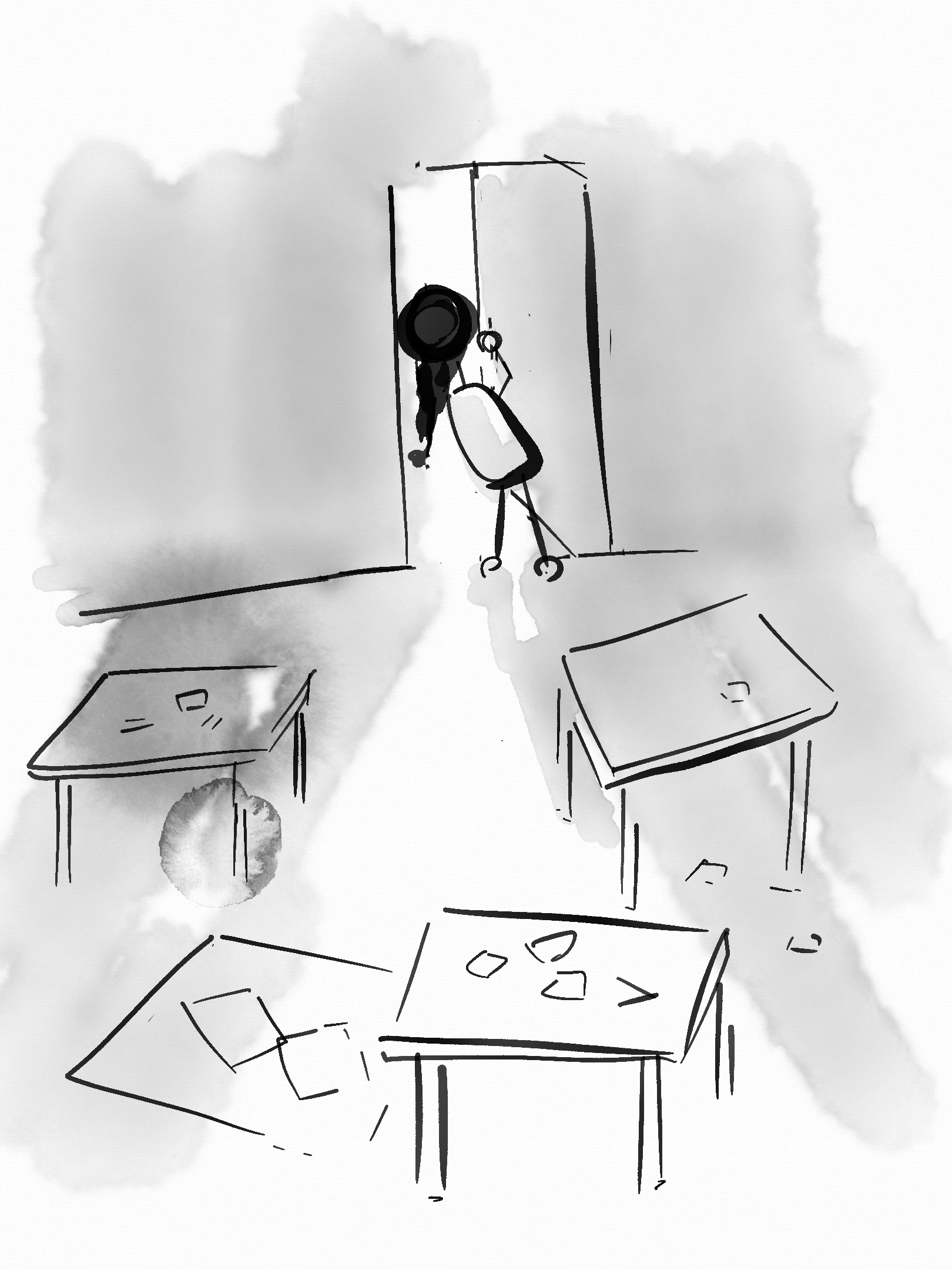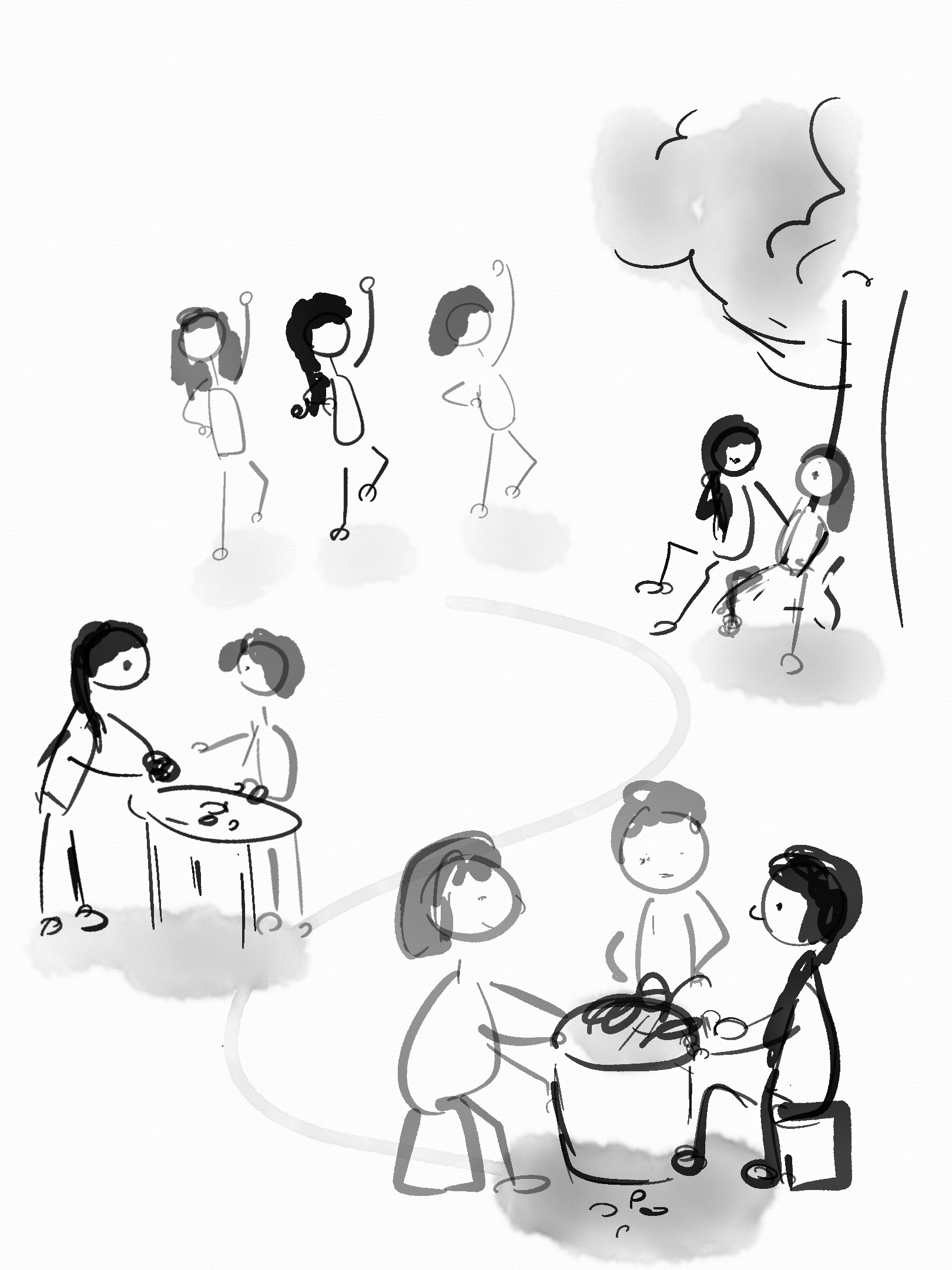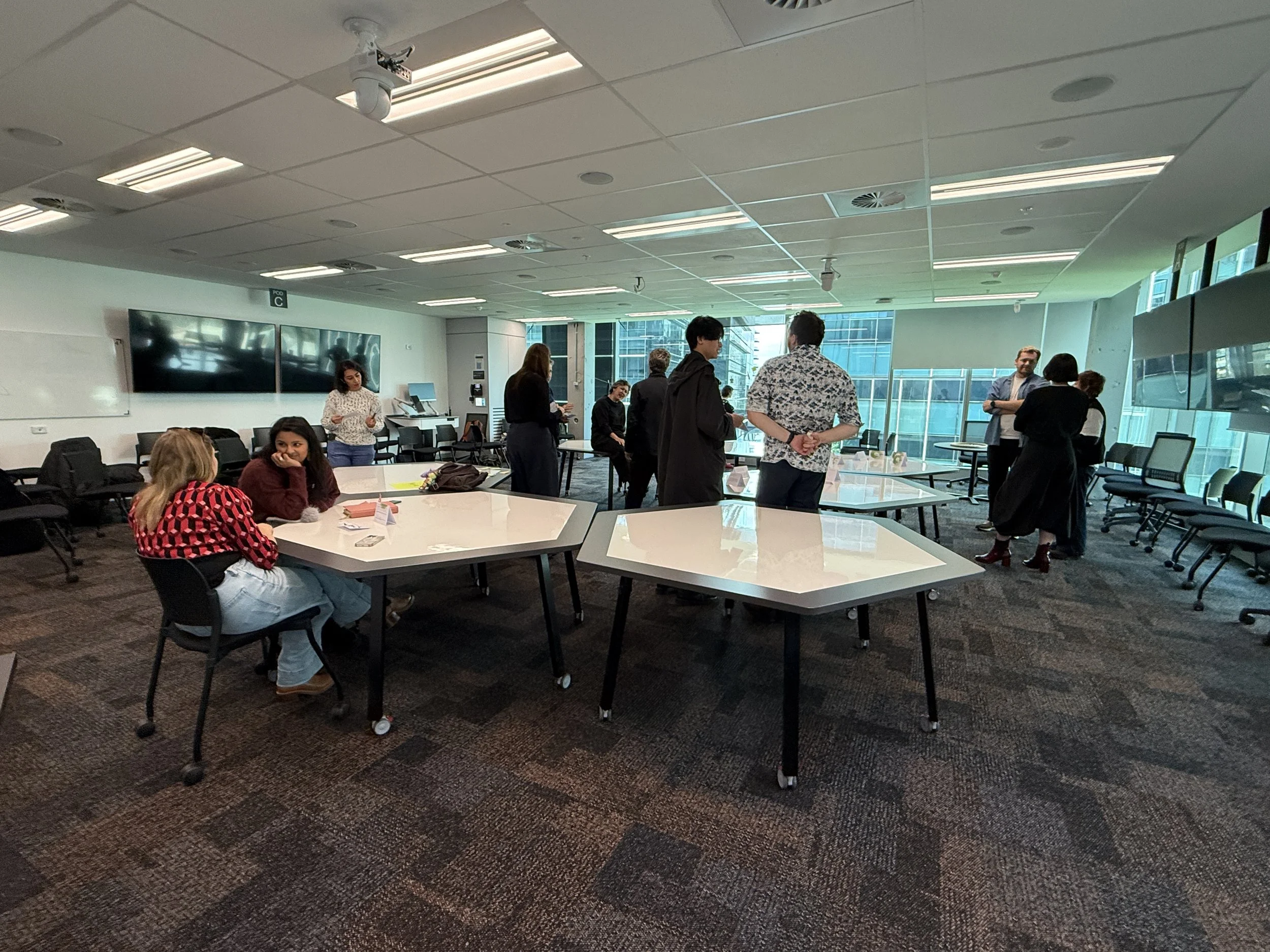A 10 minute performance of my PhD: On becoming a backdoor designer (script included)
\
Scene 1: What Are We In?
(Linda gets off a car, holding a clipboard and a tote bag full of Post-its.)
Linda (L): I'm so happy to be here! It took me 6 months to finally convince my NGO sponsor to support my co-design work with this village!
I’ve asked the village committee to send out open invites—everyone’s welcome to our first co-design workshop.
We’re going to figure out what improvements people want to see in the near future.
(Looks around the space, taking it in.)
L: Ah! This must be the room!
Perfect size for transformation.
(Cheerfully, almost breathless.)
We’ve promised the NGO sponsors and the local officials a really nice report from the end of this —
so everyone can witness the power of co-design!
(Moves to the wall, starts pinning up papers with theatrical precision.)
L: We’ve got the diamonds, the circles, the matrices.
The empathy map, journey map, stakeholder map...
The theory of change, logical model, impact model...
And... the timer.
We are SO going to deliver!
(She claps her hands.)
Welcome everyone! We’ll start by writing your ideas on these colorful notes!
(Holds one up dramatically.)
In big characters, like this!
(Writes something huge, proud.)
See? Easy!
(Pauses, reacting to imaginary faces.)
Oh—no, not my idea, your idea.
Oh, then, maybe you can draw too!
(Nervous laugh.)
Okay… maybe we’ll just talk instead.
No, I’m not a student volunteer.
No, I’m not from here...
(Kneels down.)
No, little sister, please don’t draw on this framework.
Here, use this one.
Wait, wait—uncle, please don’t leave.
Maybe your chickens can… (softly) wait for food...
(Silence. Everyone’s gone. Linda composes herself, opens her laptop.)
OK, OK. I think I can still do the report.
If I can just find something here that I can put into a framework...
(Flips through the Post-its.)
“More… money?”
(flips another note)
These are almost all empty...
(Stops. Holds up one small note.)
Oh—here’s something! It’s from little sister…
She drew a picture
of me!
(smiles, touched)
(Looks around the room, realization settling in.)
I can't believe I was paid to do this.
What are we in?
(Pause.)
And how can I get out?
*(She notices a faint draft, turns. Walks slowly to the back, finds a door, opens it. She steps out.)_
Scene 2: In the village
(Lights shift to warm daylight and ambient village sounds: chatter, clinking bowls, distant laughter.)
L (quietly, shyly):
Really? Can I try one?
(She takes a ladle, carefully stirs. Smiles.)
(Moves to another group under a tree, sits down.)
Oh, you used to work in Shenzhen!
I’ve been there too.
Yeah… the chicken meat there doesn’t taste that good.
(She stands beside someone wrapping sticky rice treats.)
Auntie, what isn’t mine holding together?
Ahhh, it’s leaking! Please help me save it!
(A chicken runs past. She jumps, startled.)
Aaahhh! That crazy chicken again!
(Now sitting comfortably, cracking sunflower seeds, nods knowingly, )
Yeah, but from your daughter-in-law’s perspective…
she might see that in a totally different way.
(Sees women dancing. Linda joins, hesitantly, then freely.)
(Holds up her phone to show someone her screen.)
Auntie, look—do you think this bottle would work for your rice wine?
It says it won’t leak during long-distance shipping.
Yeah, this other one is fancier, but it’s kind of everywhere.
(Turns around while walking and sees little sister again.)
Little sister, of course I’ll play with you—
but you have to teach me your game.
(Linda sits in a a cooking session, picking vegetables with her hands and joins a discussion.)
So, I heard the Women’s Federation has a tiny budget to add some stuff to the park.
Do you have any ideas?
More lighting in the back? Okay.
Also—last time Xiaopan’s kid said something hilarious about the kids doubling up on the swings…
Maybe we can get the kids to come up with ideas for funny park signs.
Yeah, for safety. And the garbage issue, yeah!
Next month? Yeah, that might work.
I’m going to put in a proposal OK? I believe it’ll work!
Scene 3: The front door and the back door
(Linda sits, typing quietly on her laptop.)
L (reading aloud as she types):
Field notes. September 21st.
Xiao Pan told me tonight that we didn’t buy enough benches for the square.
I said it was a trade-off — benches or solar lamps.
He said to me,
“In the old days, if a respected local figure saw aunties with nowhere to sit,
he’d just buy benches. Simple.”
(Pauses, typing slower.)
And I told him… if I work for a charity,
I have to justify every bench —
why we need them, how many,
why this kind, why here instead of there.
Maybe even invent a theory...
“One bench every 150 meters.”
He said, “Yes. But it’s necessary — when you’re in that position.”
When strangers decide for strangers,
the formality of a report becomes a ubstitute for trust.
And I said, And now people who don’t know you
are making decisions for you.
Is that why I’m here?
(Looks up; tone softens, thoughtful.)
I’ve learned so much just being here in the village.
People have so many ideas about the changes they wish to see —
and so many ways of making them.
But for so many reasons,
their desires, their creativity, their agency —
their ways of knowing are invisible to the modern eye don’t fit the formal doorways of design.
They can’t get past the grant proposal,
They need a way into that room.
(Stands slowly, walks into the workshop room through the front door, and says with conviction.)
But I have a way into that room.
I can speak and perform:
the theory of change, the logical model, the impact model,
(Voice grows with excitement after each line.)
the empathy map, journey map, stakeholder map...
the diamonds, the circles, the matrices,
the Post-its!!!
the trusted timer!
and the power —
(throws her arms into the air)
of the POWERPOINT!
(Pauses, walks to the back of the room and touches the back door, turns around and whispers)
And now I know a back door.
(Performance ends)
The script above was prepared (with the help of ChatGPT) to introduce the background of my PhD research in China to about twenty Australia-based design students and professors during a WonderLab intensive.
The actual room was the one in the photo below—on the 8th floor of the Monash University Business School building in Melbourne CBD—a setting very different from the rural sites where the experiences in the performance were originally lived.
Each year, during my short visits back to Melbourne, I have only a brief window to speak with this group of design researchers about my work. And each year, I’ve struggled with how to bring the realities of my research site in rural China with me.
So this time, I decided to experiment with opening my workshop with a 10-minute performance.
Monash rooms have always felt a little sterile to me, so I improvised: sitting by the leg of a table and pretending my back rested against a tree, or miming the movements of cooking with nothing but air. Fortunately, I had an imaginative and generous audience, who later reassured that they “laughed at all the right moments.”
The ideas for the performance came from memorable moments across the past four years. With time and ongoing reflection, scattered memories became a narrative I could shape with intention. I had shared most of these moments before, through photos, stories, and occasional writing, but writing the script and deciding how each detail should be enacted opened an entirely different mode of sharing. It didn’t just ask me to recall the memories or abstract them into colours and shapes; but to revisit them repeatedly through spoken words, body movement and facial expressions. In the end, it felt like a deeply embodied, nuanced, and playful form of autoethnographic expression.



